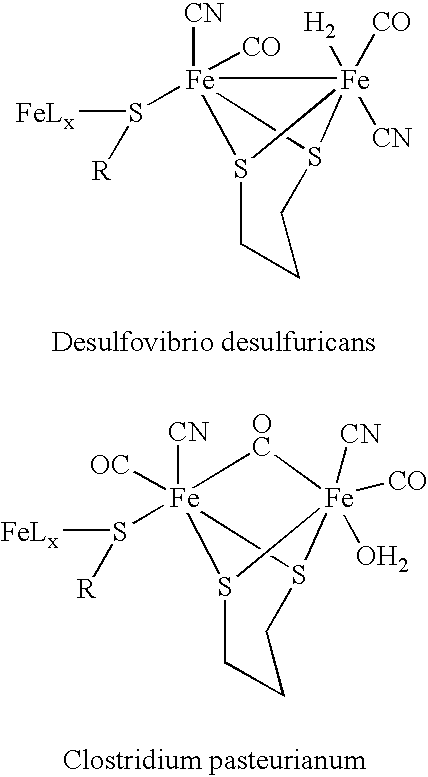Method for treating a mammal by administration of a compound having the ability to release CO, compounds having the ability to release CO and pharmaceutical compositions thereof
- Summary
- Abstract
- Description
- Claims
- Application Information
AI Technical Summary
Benefits of technology
Problems solved by technology
Method used
Image
Examples
example 1
[0112]Preparation of the Sugar Derivatized Cyclopentadiene Ligand 1
[0113]To a solution of CpNa (2.2 g, 24.3 mmol) in DMF (8 ml) was added a solution of the protected sugar (3.7 g, 8.1 mmol) in DMF (20 ml) at −30° C. The reaction mixture was stirred at low temperature for 15 min and then was allowed to warm up to room temperature and stirred for a further 2 h. Destilled water (40 ml) was added to the mixture to destroy the excess of CpNa. The mixture was extracted with dichloromethane (2×100 ml) and the organic layer was dried with Na2SO4 and DMF was evaporated under vacuum. The residue was purified by columm chromatography on silica (AcOEt / n-hexane 1:8) to give the tittle compound 1 as a yellow oil. Yield g (75%). Since several isomers are present, the compound was best characterized and stabilized by transformation into its TI+ salt by action of TIOC2H5 or the Na+ salt by action of NaH. The ionic derivative of cyclopentadiene 1 as the TI+ salt, hereby abbreviated as CpsTI, was easi...
example 2
Preparation of Compound 2
[0116]To a solution of Mo(CO)3(NCMe)3 (0.4 g, 1.14 mmol) in toluene (20 ml) was added a solution of CpsH (0.4 g, 1.14 mmol) in toluene (20 ml) at room temperature. The reaction mixture was stirred for 2 h and the orange solution was filtered through Celite. The filtrate was concentrated to dryness and the residue was dissolved in dichloromethane (50 ml). Solid CHl3 (0.37 g, mmol) was added to the dichloromethane solution and the colour immediately turned to a deep red. The reaction mixture was stirred for a further 30 min to ensure completion of the reaction and the solvent was removed under vacuum. The title compound 3 was isolated as a red solid. Yield (68%). Anal. Calc. for C22H31MoO7Sil: C, 40.13; H, 4.75. Found: C, 39.84; H, 4.45. Selected IR (KBr, cm−1): 2039, 1963, 1884, vs, ν(CO);
example 3
Preparation of Compound 3
[0117]Solid MnBr(CO)5 (0.14 g, 0.54 mmol) was added as a solid to a stirred solution of CpsTI (0.3 g, 0.54 mmol) in THF (40 ml) at room temperature. The reaction mixture was stirred for 16 h and the solvent was removed under vacuum. The residue was extracted in dichloromethane to yield the title compound 2 as a waxy yellow solid. Yield g (73%). Anal. Calc. for C22H31 MnO7Si: C, 53.98; H, 6.32. Found: C, 53.51; H, 6.15. Selected IR (KBr, cm−1): 2019, 1928, vs, ν(CO).
PUM
 Login to View More
Login to View More Abstract
Description
Claims
Application Information
 Login to View More
Login to View More - R&D
- Intellectual Property
- Life Sciences
- Materials
- Tech Scout
- Unparalleled Data Quality
- Higher Quality Content
- 60% Fewer Hallucinations
Browse by: Latest US Patents, China's latest patents, Technical Efficacy Thesaurus, Application Domain, Technology Topic, Popular Technical Reports.
© 2025 PatSnap. All rights reserved.Legal|Privacy policy|Modern Slavery Act Transparency Statement|Sitemap|About US| Contact US: help@patsnap.com



